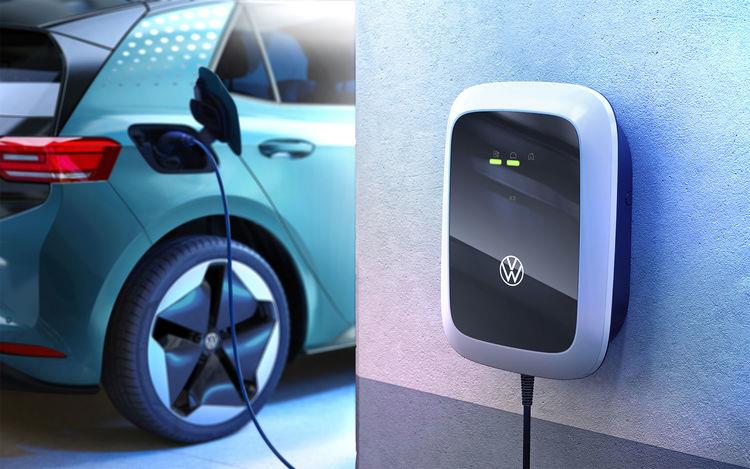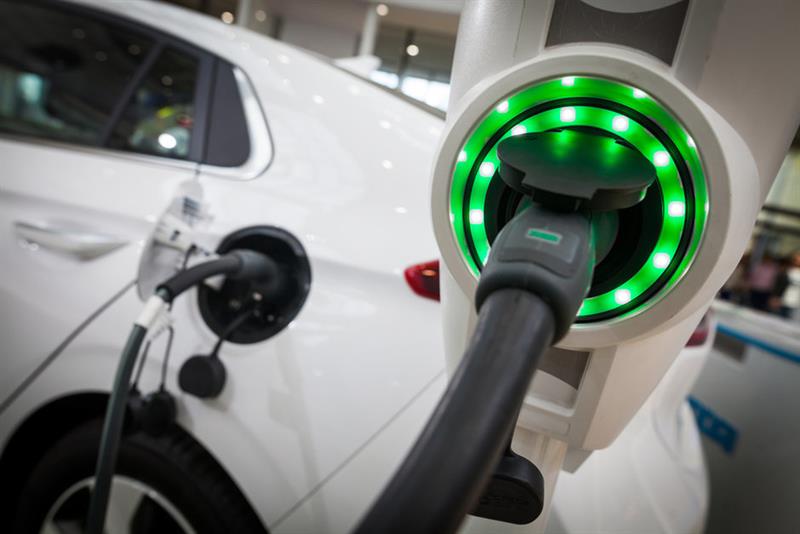Faced with growing competition from OEMs based in countries like China and from new entrants, many are now engaging with SMEs and start-ups in order to remain competitive.
The number of companies in the EV space has increased significantly, giving rise to what is described as ‘product pollution’ and there are doubts that many of these new entrants will survive. But, for the moment, factors such as customer awareness, advances in technology and growing intervention from governments are laying the foundations of a viable mass market for battery powered electric vehicles.
Established manufacturers with their investment targets and production goals for vehicle production, are likely to have to change the way they operate if they want to be able to invest in new factories, re-tooling, design, innovation and talent. If they get that wrong, then they could end up losing billions and ultimately going out of business.
Incumbents not only have to handle the changing economics of EV production but address competition from a new wave of entrants – although even among new entrants, there is no guarantee for success.
As Dunstan Power, Director of ByteSnap Design explains, “The electric vehicle (EV) space is currently dominated by automakers with the deep pockets necessary to design and manufacture vehicles. As for new entrants, Dyson is just one example of a large company that had to pull out of the EV space, even after committing £2 billion.”
Dyson had been developing an electric car to rival Tesla, but then found it to be inordinately expensive. According to reports the company discovered that the battery, battery management, electronics and thermal management systems were simply too expensive to enable it to develop a economically viable vehicle.
Even a ‘success’ like Tesla has managed to burn through $20 billion and has yet to make a profit.
“The move to electric-powered vehicles is a paradigm shift, as we’re not just talking about changing the vehicle, but the entire infrastructure around how we drive and support it,” explains Power.
As a result, he believes that there are lots of business opportunities around EVs for SMEs which go far beyond the development and manufacture of the vehicles themselves, whether that’s developing chargers and the grid infrastructure.
For SMEs there are plenty of opportunities to innovate, according to Power.
“Take petrol stations. They will become EV charging stations which will need entertainment provision for EV drivers waiting for their cars to charge. As for the infrastructure, EVs are a load on the grid but they can also add back to it via Vehicle-to-Grid (V2G), and also Vehicle-to-Building (V2B) technology. If you’re able to combine smart chargers with V2G technology, the energy stored in electric vehicles can be redistributed to the grid during peak hours, easing some of the burden to the grid and potentially earning the vehicle’s owner money when their car is idle.”
EV innovation
SMEs tend to be able to drive innovation more than large companies.
“While vehicle innovation is very costly and best left to the auto manufacturers, from our experience as a design consultancy, SMEs are driving innovation in EV infrastructure,” says Power. “Grid connection development is mostly down to SMEs, as they excel in technology related to energy storage and recycling. Developments in V2G, for instance, are driven by SMEs rather than the automotive firms and bigger companies.”
While SMEs are certainly more innovative and agile than the traditional automotive firms, there are innovative car giants, says Power. “They will have very long, expensive design cycles, however, when compared to SMEs.”
Power suggests that while automotive firms are producing safety critical products and are focused on reliability, SMEs are in a much better position when it comes to creating the cool, new products that will drive changes, and which the Tier 1s will acquire and implement.
“Volkswagen, for example, launched charging business Elli to offer intelligent electricity tariffs, Wallboxes, charging points and an IT-based energy management system; these were probably designed in conjunction with or by SMEs,” he suggests.

So if smaller businesses are innovating more around the EV space than their larger counterparts, what are the opportunities and how should they engage with established players?
According to Moran Price, co-founder and CEO of e-mobility start-up IRP Systems, start-ups and OEMs/Tier 1s should look to complement one another. While start-ups have the agility and latitude to innovate in a way that larger organisations don’t, they need to work with OEMs who have the size and power to bring innovations to market.
“Both need to leverage their respective strengths when it comes to EV development,” says Price.
“The shift to electrification has enabled so many changes to be made to the platform, the value chain and the usage model – that it has disrupted everything and, as a result, has accelerated the adoption of new technologies and stimulated innovation.
“EV is not just about replacing the power train, because when we electrify a vehicle there’s a requirement for many new components that were not there before,” she explains.
“The electrification of the platform has enabled the introduction of new mobility technologies and of innovative services, seen the development of cyber-security and the advent of autonomous driving. Electrification makes it much easier to integrate new technologies and change the concepts and ideas around vehicles; but also to broaden the range of mobility solutions.”
Price makes the point that in Europe, in particular, regulations have played a critical role in driving the EV market.
“For once, regulators have been ahead of the industry with regulations and legislation relating to sustainability and the protection of the environment forcing the automotive industry to bring EVs to market quicker.”
This provides a great opportunity for SMEs and start-ups, according to Price.
“Innovation at speed is the ‘bread and butter’ of an SME. Many large companies are turning to them to shorten time-to-market, because they want to avoid penalties and the loss of market share. They want to keep a competitive position, so most are now collaborating and working with start-ups.”
“New markets are ideal spaces for SMEs as they are agile, take risks and can fail quickly,” agrees Power. “The automotive industry is changing and heralding a new world view of greener and cleaner. There are lots of business opportunities for SMEs to develop innovative ideas.”
Power makes the point that as a paradigm shift the move to electrification is affecting the whole EV infrastructure, including smart cities, so opportunities are not just tied to the vehicle.
To be successful in this space OEMs will need to develop an extensive supplier ecosystem in which SMEs and start-ups will have an important role.
“It’s critical and for most it’s the ‘new reality’,” says Price. “Today, it’s at the heart of most business models within the automotive sector. For example, IRP Systems is working with a number of large industry partners to co-develop systems that can be developed into their platforms.”
To be successful Price suggests that it will require new sets of skills and better understanding between nimble specialists and larger more established players.
“Companies will need to change the way they work and engage. Fort sure, some will be more successful than others. There is a need for collaboration in order to integrate new technologies and to bring products to market more quickly.”
Price has a word or warning, however. “You can come up with a great, innovative solution but if it is hard to commercialise it simply will not happen. In this space it’s not all about innovation, or performance improvements. You need to think how you will integrate new technology into a traditional production line and then whether you can scale it up.”
“SMEs need to focus on manufacturability and testability and there needs to be much greater awareness of the requirements associated with later production stages.”
According to Power, there is still a challenge connecting larger firms with smaller companies.
“There should be more collaboration, rather than large companies liking an idea and then acquiring the SME, in order to own it/claim it as their own.
“Larger companies tend to do their own thing, but while there are government schemes aimed at pulling SMEs and automotive firms together there is still a gap, there is an opportunity for SMEs to use accelerator models, government Innovate UK schemes, or open idea competitions even, to target large companies with their ideas.”
ByteSnap recently worked as part of a consortium on VIGIL, a project that was part-funded through a technology drive by the British Government to encourage low emission transport solutions.
“The project saw ByteSnap develop V2G charge-posts to manage EV / building energy dispatch and ensure distribution network limits are not exceeded,” says Power. “Following on from that project, and in response to increasing demand for our expertise in EV charging projects over the last 12 months, we are launching a new division called Versinetic, which will focus on the EV charging infrastructure.”

Changing supply chains
In the coming years OEM’s and Tier 1 automotive suppliers will have an enormous opportunity with the development of EVs and autonomous vehicles, but there are significant challenges in particular from new competitors such as the large technology companies, who may weaken traditional supply chains by simply doing things differently and new electric vehicle start-ups, that while opening up new markets could end up by-passing them completely.
“It’s hard to get into an automotive manufacturing supply chain,” says Power. “SMEs designing and developing technology for EVs such as charging infrastructure do not really fit into the automotive supply chain but rather predominately use industrial and commercial parts. SMEs may gain entry to non-safety critical supply chains as there are lower standards, providing an easier “in”.”
There is a growing shift from petrol-defined supply chains (and cars with lots of mechanical parts on them) to electronic supply chains.
“EV cars are computers on wheels,” says Power, “and an EV has 10% of the moving parts of a petrol vehicle. This means component manufacturers will benefit from rising EV sales. It also means that scaling of supply is required in many areas.”
Price thinks that is plenty of room for new players, especially very small start-ups interacting with large OEMs. “When it comes to the supply chain we are seeing the tectonic plates shifting,” she believes. “I don’t believe there is simply one entry point and I think there are plenty of opportunities for start-ups and SMEs.”
In Europe governments are looking to promote greater sustainability and greener polices and to achieve that they need to improve the competitiveness of the automotive industry.
By supporting small and medium enterprise (SME) development it will be possible to achieve both economic growth and reduce emissions but that will require changes in established relationships within the automotive supply chain. For SMEs, which are more capable of developing those technologies, they will have a critical role to play in the reshaping of this new EV based automotive value chain.
But if they are to deliver then SMEs and start-ups will need more support whether that’s protecting their technology, establishing relationships or obtaining the funding they need for future investments.













